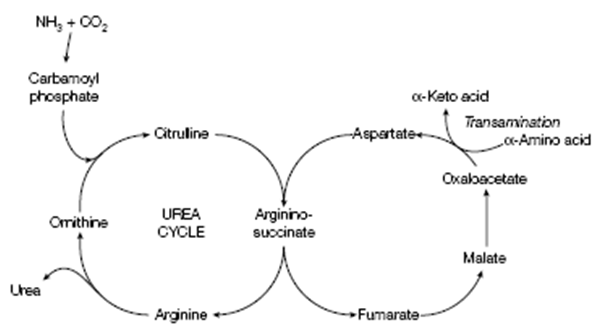Hyperammonemia:
Why do organisms required to detoxify ammonia in the first place? The answer to this question is obvious when one considers what happens if there is a block in

Figure: The urea cycle and the citric acid cycle are linked by fumarate and the transamination of oxaloacetate to aspartate.
the urea cycle due to a defective enzyme. The block in any of the urea cycle enzymes leads to an increase in the amount of ammonia in the blood, so-called hyperammonemia. The most general cause of such a block is a genetic defect which becomes apparent soon after birth, when the af?icted baby becomes vomits and lethargic periodically. If left untreated, irreversible brain damage and coma will follow. The motivation for this are not entirely clear but should be because the excess ammonia leads to the increased formation of glutamine and glutamate. These reactions result through depletion of the citric acid cycle intermediate α-ketoglutarate that may then compromise energy production and especially in the brain. It also leads to an increase in the acidic amino acids glutamate and glutamine that should straightly cause damage to the brain.